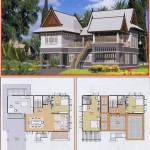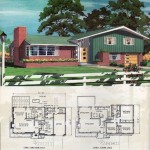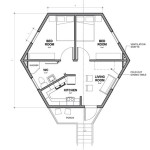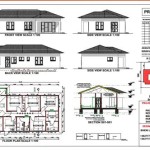Essential Aspects of Traditional Japanese House Plan
Traditional Japanese houses, known as minka, embody a harmonious blend of aesthetics, functionality, and cultural values. Their design principles have evolved over centuries, reflecting the unique climate, geography, and lifestyle of Japan. Understanding the essential aspects of a traditional Japanese house plan is key to appreciating the architectural heritage of this fascinating country.
1. Post-and-Beam Structure
Minka houses are characterized by a post-and-beam structural framework made of sturdy timber. This flexible system allows for easy modifications, additions, and repairs. The beams are typically made of Japanese pine, known for its strength and durability.
2. Raised Floor
Most traditional Japanese houses feature a raised floor, typically elevated 30 to 60 centimeters above ground level. This design serves several practical purposes. It keeps the house dry from moisture and flooding, provides better ventilation, and offers thermal insulation from the cold ground during winter.
3. Verandas and Overhangs
Verandas (engawa) are an integral part of Japanese houses, providing a transitional space between the interior and exterior. They are covered by deep overhangs (noki) that extend the roof beyond the walls. These overhangs protect the house from rain and sun, creating shaded areas for outdoor living.
4. Sliding Doors and Paper Screens
Sliding doors (fusuma) and paper screens (shoji) are essential elements of minka interiors. These movable partitions allow for flexible space division, creating a dynamic and adaptable living environment. Fusuma are opaque, richly decorated sliding doors made of wood or paper, while shoji are translucent screens made of rice paper that diffuse light and provide privacy.
5. Natural Materials
Traditional Japanese houses emphasize the use of natural materials, particularly wood, bamboo, and paper. These materials create a warm and inviting atmosphere, harmonizing with the surrounding environment. Walls are often made of woven bamboo mats (tatami), while roofs are typically thatched with rice straw or covered with clay tiles.
6. Open Floor Plan
Minka houses often have an open floor plan with minimal fixed walls. Instead, flexible dividers like fusuma and shoji can be used to create separate spaces as needed. This design allows for adaptability to changing needs and promotes a sense of spaciousness.
7. Tokonoma and Butsudan
Two significant cultural elements found in traditional Japanese houses are the tokonoma and butsudan. The tokonoma is a recessed alcove used for displaying artwork, scrolls, or flowers, adding an element of beauty and refinement to the living space. The butsudan is a small altar dedicated to the ancestors and Buddhist deities.
Conclusion
Traditional Japanese house plans embody the ingenuity and cultural values of Japan. Their post-and-beam structure, raised floor, verandas, sliding doors, natural materials, open floor plan, and cultural elements combine to create a harmonious and adaptable living environment. Understanding these essential aspects provides a deeper appreciation for the architectural heritage of this fascinating country.

Traditional Japanese House Floor Plan Google Search Plans

Typical Home Layouts Differences Between Japan And Abroad

Traditional Japanese House Plan Style Plans

Traditional Japanese Home Floor Plan Cool House Plans Ideas Des Architecture Style

The Layout Of Ground And First Floor A Traditional Japanese House Scientific Diagram

Japanese Home Design Ideas Pictures 331 Sqm Homestyler

Typical Layout Of Japanese Traditional House Schoenauer 1962 Scientific Diagram

Traditional Japanese Architecture Tea Ceremony Japan Experiences Maikoya

Prefab Japanese Pavilion Traditional Architecture

Hachidori Floor Plan Traditional Japanese House Japan Design Home Plans








